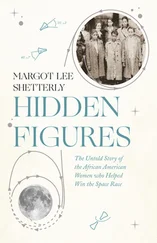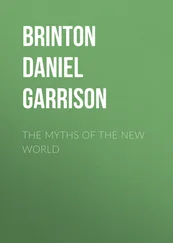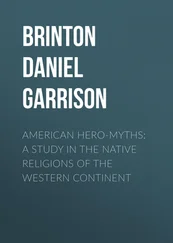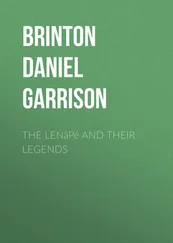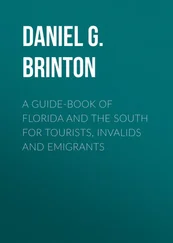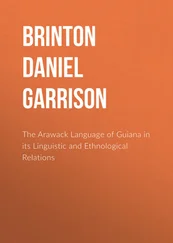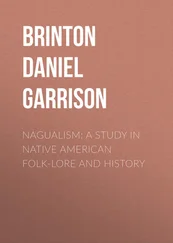Daniel Brinton - The American Race
Здесь есть возможность читать онлайн «Daniel Brinton - The American Race» — ознакомительный отрывок электронной книги совершенно бесплатно, а после прочтения отрывка купить полную версию. В некоторых случаях можно слушать аудио, скачать через торрент в формате fb2 и присутствует краткое содержание. Жанр: foreign_antique, История, История, foreign_edu, на английском языке. Описание произведения, (предисловие) а так же отзывы посетителей доступны на портале библиотеки ЛибКат.
- Название:The American Race
- Автор:
- Жанр:
- Год:неизвестен
- ISBN:нет данных
- Рейтинг книги:4 / 5. Голосов: 1
-
Избранное:Добавить в избранное
- Отзывы:
-
Ваша оценка:
- 80
- 1
- 2
- 3
- 4
- 5
The American Race: краткое содержание, описание и аннотация
Предлагаем к чтению аннотацию, описание, краткое содержание или предисловие (зависит от того, что написал сам автор книги «The American Race»). Если вы не нашли необходимую информацию о книге — напишите в комментариях, мы постараемся отыскать её.
The American Race — читать онлайн ознакомительный отрывок
Ниже представлен текст книги, разбитый по страницам. Система сохранения места последней прочитанной страницы, позволяет с удобством читать онлайн бесплатно книгу «The American Race», без необходимости каждый раз заново искать на чём Вы остановились. Поставьте закладку, и сможете в любой момент перейти на страницу, на которой закончили чтение.
Интервал:
Закладка:
It was a serious misfortune for the Americans that the fauna of the continent did not offer any animal which could be domesticated for a beast of draft or burden. There is no doubt but that the horse existed on the continent contemporaneously with post-glacial man; and some palæontologists are of opinion that the European and Asian horses were descendants of the American species; 56 56 This opinion is defended by Max Schlosser in the Archiv für Anthropologie , 1889, s. 132.
but for some mysterious reason the genus became extinct in the New World many generations before its discovery. The dog, domesticated from various species of the wolf, was a poor substitute. He aided somewhat in hunting, and in the north as an animal of draft; but was of little general utility. The lama in the Cordilleras in South America was prized principally for his hair, and was also utilized for burdens, but not for draft. 57 57 The lama was never ridden, nor attached for draft, though the opposite has been stated. See J. J. von Tschudi, “Das Lama,” in Zeitschrift für Ethnologie , 1885, s. 108.
Nor were there any animals which could be domesticated for food or milk. The buffalo is hopelessly wild, and the peccary, or American hog, is irreclaimable in its love of freedom.
We may say that America everywhere at the time of the discovery was in the polished stone age. It had progressed beyond the rough stone stage, but had not reached that of metals. True that copper, bronze and the precious ores were widely employed for a variety of purposes; but flaked and polished stone remained in all parts the principal material selected to produce a cutting edge. Probably three-fourths of the tribes were acquainted with the art of tempering and moulding clay into utensils or figures; but the potter’s wheel and the process of glazing had not been invented. Towns and buildings were laid out with a correct eye, and stone structures of symmetry were erected; but the square, the compass, the plumb line, and the scales and weight had not been devised. 58 58 See “The Lineal Measures of the Semi-Civilized Nations of Mexico and Central America,” in my Essays of an Americanist , p. 433 (Philadelphia, 1890).
Commodious boats of hollowed logs or of bark, or of skins stretched on frames, were in use on most of the waters; but the inventive faculties of their makers had not reached to either oars or sails to propel them, 59 59 The Caribs and some of the Peruvian coast tribes sometimes lifted a large square cloth when running with the wind; but this is not what is meant by a sail.
the paddle alone being relied upon, and the rudder to guide them was unknown. The love of music is strong in the race, and wind instruments and those sounded by percussion had been devised in considerable variety; but the highest type, the string instruments, were beyond their capacity of invention.
The religious sentiment was awake in all the tribes of the continent, and even the lowest had myths and propitiatory rites by which to explain to themselves and cajole to their own interests the unknown powers which order the destiny of human life. There is a singular similarity in these myths. The leading cycle of them usually describes the exploits of a divine man, the national hero-god, who was the first instructor, often the ancestor of the tribe, and the creator of the visible universe. His later history is related with singular parallelism by tribes in Canada and Mexico, in Yucatan and Uruguay. After teaching his people the arts of life and the sacred rites, the forms of their social organizations and the medicinal powers of plants, he left in some mysterious way, not by the event of death, but for a journey, or by rising to the sky; leaving with them, however, his promise to return at some future day, when they should need him, and he should again become their guide and protector.
The interpretation of this fundamental American myth, which I have shown to be the typical religious legend of the race, 60 60 American Hero-Myths (Philadelphia, 1882).
offers an interesting problem. Comparing it with others of similar form in Egyptian and Aryac antiquity, I have explained it as based on the natural phenomenon of the returning and departing day, as, if not a solar, at least a light myth, developed through personification and etymologic processes. Often the hero-god is identified with some animal, as the raven, the rabbit, the wolf or coyote, the jaguar, the toucan, etc. Possibly in these we may recognize the “totemic animal” after which the gens was named; but in most cases the identification cannot be made.
The hero-god is usually connected with tales of a creation and a flood, or other destruction of the world. These cosmogonical and cataclysmal myths belong together, and arise from the same impulse to explain cosmic phenomena by the analogy with ordinary changes of the seasons and the day. In constant connection with them, and also with the rites of religion and medicine, with the social institutions and the calendar, with the plans of edifices and the arrangement of gens and phratries, in fact, with all the apparatus of life, was a respect for the sacred number . It is strange how constantly this presents itself throughout American life, and is, in fact, the key to many of its forms. The sacred number is Four, and its origin is from the four cardinal points. These were the guides to the native in his wanderings, and, as identified with the winds, were the deities who brought about the change of the seasons and the phenomena of the weather. They were represented by the symbols of the cross, whose four arms we see portrayed on the altar tablet of Palenque, on the robes of the Mexican priests, in the hieroglyphs of the Algonkins, and in countless other connections.
A rich symbolism rapidly developed in all the sedentary tribes, and very much along the same lines. The bird, the serpent, the sacred stone, the tree of life, water as a purifier, the perpetual fire, all these are members of a religious symbolism, clear signs of which recur in all segments of the continent. The chants and dances, the ritual of the medicine men, the functions of esoteric orders and secret societies, present a resemblance greater than that which can be explained by a mere similarity in the stage of culture. I explain it by the ethnic and psychical unity of the race, and its perpetual freedom from any foreign influence.
The mortuary rites indicated a belief in the continued existence of the individual after apparent death. These were by incineration, by inhumation, by exposure, or by mummification. Articles were placed with the deceased for use in his future state, and the ceremonies of mourning were frequently severe and protracted. A sacredness was generally attached to the bones and therefore these were carefully preserved. In accordance with a superstition widely felt in the Old World, they were supposed to harbor some share of the departed spirit. The conception of the after life is wholly material. The Zapotec, for instance, believes that he will return to his familiar haunts after a few hundred years, and buries all the money he makes that he may then live at his ease. Von Gagern estimates the amount of silver thus secreted and lost within the last century at a hundred million dollars. 61 61 Carlos de Gagern, Charakteristik der Indianischen Bevölkerung Mexikos , s. 23 (Wien, 1873.)
The ceremonies of religion, which included that of the treatment of disease, inasmuch as a demonic cause was always assigned to illness, were in the hands of a particular class, known to the whites as “medicine men,” or shamans, or sorcerers. Sometimes the right of belonging to this order was hereditary in a gens, but generally peculiar aptitude for the business was the only requirement. Many of them were skilled in legerdemain, and even to-day some of their tricks puzzle the acutest white observers. As doctors, augurs, rain-makers, spell-binders, leaders of secret societies, and depositaries of the tribal traditions and wisdom, their influence was generally powerful. Of course it was adverse to the Europeans, especially the missionaries, and also of course it was generally directed to their own interest or that of their class; but this is equally true of priestly power wherever it gains the ascendency, and the injurious effect of the Indian shamans on their nations was not greater than has been in many instances that of the Christian priesthood on European communities.
Читать дальшеИнтервал:
Закладка:
Похожие книги на «The American Race»
Представляем Вашему вниманию похожие книги на «The American Race» списком для выбора. Мы отобрали схожую по названию и смыслу литературу в надежде предоставить читателям больше вариантов отыскать новые, интересные, ещё непрочитанные произведения.
Обсуждение, отзывы о книге «The American Race» и просто собственные мнения читателей. Оставьте ваши комментарии, напишите, что Вы думаете о произведении, его смысле или главных героях. Укажите что конкретно понравилось, а что нет, и почему Вы так считаете.

